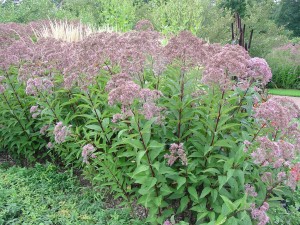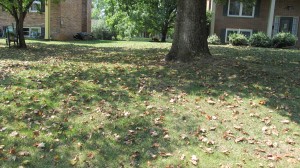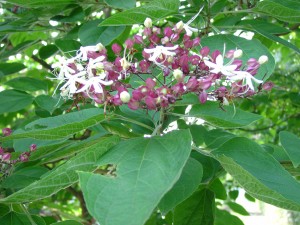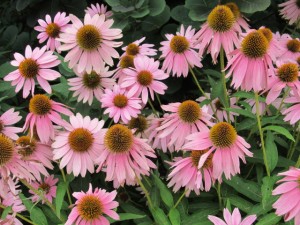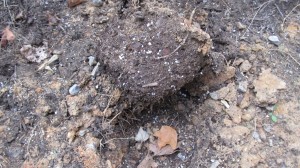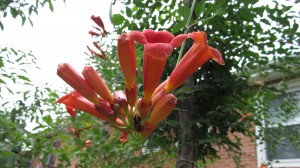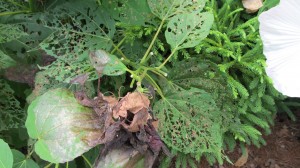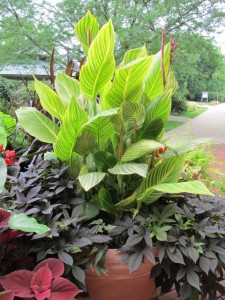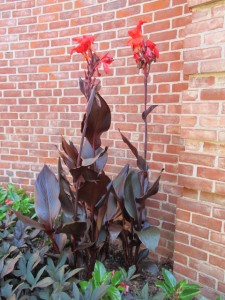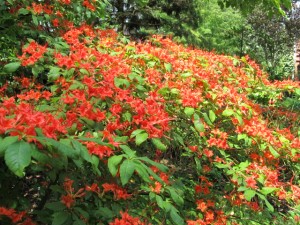On hot clammy August days, towering 6-8 feet in height, there is Joe-Pye* weed (Eupatorium purpureum) to enjoy. It is visually hard to miss when driving along rural roads in the Southern Appalachian region (USDA zones 6 and 7). Joe-Pye’s flowering sends me a timely message that autumn is only six weeks away.
For gardens the cultivar ‘Gateway” (E. purpureum spp. maculatum ‘Gateway’) is a better fit, more compact at 4-5 feet tall and 3-4 feet wide. Its enormous compound inflorescences measures 12-18 inches in diameter. From late summer into fall the dusky pink flowers invite numerous butterflies and other insects into your garden and make great cut flowers.
Gateway’s upright form and stout branches require no staking. The large narrow dark green leaves are 5-8 inches long and coarsely-serrated, arranged in whorls around the purple and white splotched stems. The mighty architectural seed heads persist well through the winter months.
Joe-Pye, aka “Queen of the Meadow”, demands full to partial (6-hours minimum) sunlight. Joe-Pye is a wetland native and thrives in moist, compost-rich garden soil. Fertilizing this long-lived perennial is not necessary. Plants emerge in late spring and grow very rapidly. Situate in the rear of flower borders due to its plant size and coarse foliage texture. Joe-Pye has no serious diseases or insects and is deer resistant.
* According to forklore, the plant is named for Joe Pye (or Jopi), who was a traveling Native American medicine man. He lived in New England around the late 1700s and sold various herbal remedies to the colonists to treat kidney and urinary problems and typhoid fever. Leaves were also dried and burned as incense to repel flies.

